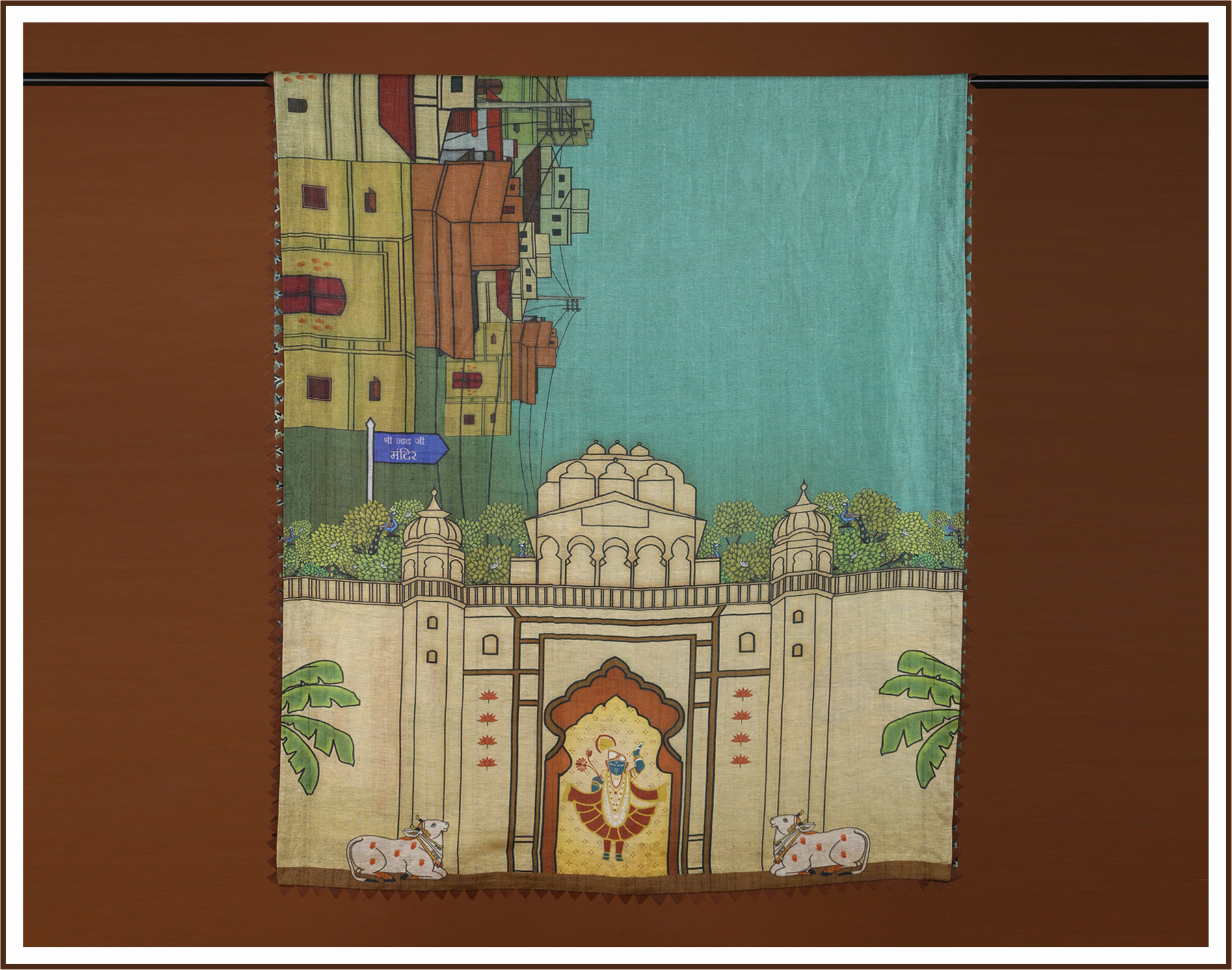

Label Pratham is now a well known name in ethnic fashion. We credit this to our sincere conviction for ‘creativity’ and ‘innovation’- the ingredients that go into designing every ensemble in our studio. In the continuation of our Did You Know series, we are exploring the Pichwai painting, its origin, and core values. Here are some more intriguing facts.
The holy and sacred Cow is traditionally known as 'Dhenu', contrary to the popular belief that it is referred to as Nandi (which means a bull). Dhenu plays a significant role in the story of Krishna Lord painting and therefore forms an integral part of Pichwai painting. The impressions of hands-on Dhenu stand for blessings of Lord Krishna, his touch of love, protection, and compassion towards cowherds and their cows. Label Pratham is constantly celebrating Lord Krishna and its glory through its majestic textile collection.
Gopashtami is a festival that celebrates the day when young Lord Krishna was promoted to the rank of a full-fledged cowherd and got the title of Gopala – The Lord of Cows. The GopashtamiPichwai generally showcases Shrinathji playing flute to enchant his Dhenus. He is also shown either at the gates of the haveli or in his sanctum where he is surrounded by several dhenus – ardently there to seek the Lord.
Morakuti Pichwais are named after a little village near Vraj, also known as Mayur Kuti. Krishna danced like a mor (peacock) here to amuse Radha. These Pichwai paintings are displayed in the sanctum during monsoon season. A typical Morakuti Pichwai painting shows plenty of peacocks dancing on the banks of river Yamuna, as rain clouds gather. Gods assemble in their chariots above to witness the divine dance.
Deccani or Golconda style of Pichwai paintings originated in Hyderabad. These distinct Pichwais are characterized by the lavish use of gold & silver foils applied over drawn images on a deeper color palette (like red and black). Krishna is rarely portrayed figuratively in these works. The Vrikshachari Pichwai is one example which shows Krishna’s presence in the Kadamba tree. The gopis are shown in typical Deccan way of dress and jewelry, Dhenus with longer bodies, the foliage is lush umbrella type with straight tree trunks.
Among the numerous narrow lanes around Lord Shrinathji's Haveli in Nathdwara is the street 'Chitrakaron ki Gali' where artists reside and practice world-famous Pichwai art. Beautiful motifs from the art adorn the walls of the houses and streets giving the place a festive vibe all year round. Having a huge respect for all the Chitrakars, Label Pratham is keeping their cultural art alive with our brand pioneering in the textile industry.
The setup in Pichwai karkhana, is like a pyramid representing Mount Govardhan. At the top is a master, a well-known artist, followed by a middle order of assistants, and then their apprentices. But sadly, late embellished wooden cut-outs and printed images of the Shrinathjis' icon throng the shops in Nathdwara, signaling an urgent revival of this age-old art form.
At Label Pratham, we have travelled through the history and repertoire of Pichwai painting motifs, its intricacies, visual nuances, and technicalities of craft. For the longest time, this art form was relegated to Shrinathji's temple at Nathdwara, performing the spiritual and aesthetic function of providing a backdrop to his Swarup. In 2014, we undertook a creative and spiritual journey to Nathdwara that inspired us to expand this rich artistic tradition onto the sphere of textile and wearable art, to share with the world what we had discovered and experienced.
